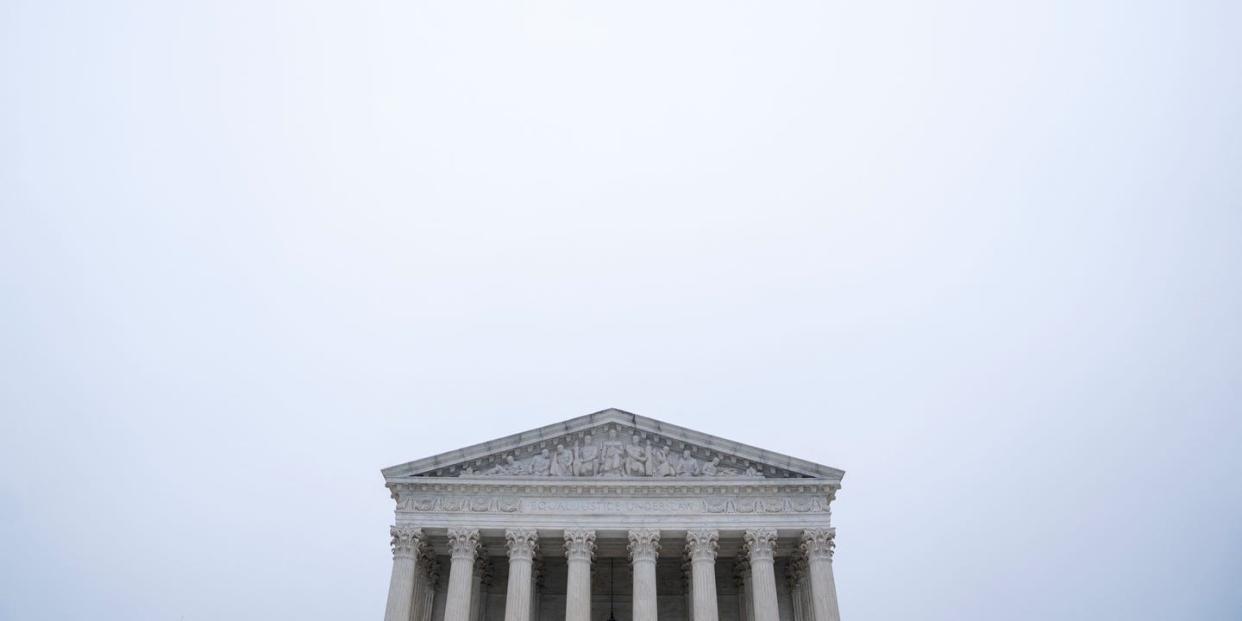There Have Been Leaks from the Supreme Court Before, But Never Like This

On Monday evening, Politico broke what is sure to be one of the biggest stories of the year: a draft opinion showing that the Supreme Court intends to vote to overturn Roe v. Wade. Politico's story is sourced from a leak inside the nation's highest court, and as the publication explains, "no draft decision in the modern history of the court has been disclosed publicly while a case was still pending."
Today, the Supreme Court confirmed the leak with a statement: "Yesterday, a news organization published a copy of a draft opinion in a pending case. Justices circulate draft opinions internally as a routine and essential part of the Court’s confidential deliberative work. Although the document described in yesterday’s reports is authentic, it does not represent a decision by the Court or the final position of any member on the issues in the case."
Chief Justice John G. Roberts Jr. also released a statement, which reads: "This was a singular and egregious breach of that trust that is an affront to the Court and the community of public servants who work here."
Though a draft decision has never leaked before, a Supreme Court leak is not exactly unprecedented.
In fact, the Roe v. Wade decision itself was leaked to the press in January 1973, when Larry Hammond, a Supreme Court clerk, shared the news with a Time magazine reporter—resulting in the story appearing hours before Justice Harry Blackmum announced the vote. Before that, while the case was still under deliberation, an anonymous story ran in the Washington Post detailing the justices' debates on the topic of abortion, citing a memo written by Justice William Douglas.
Hammond's leak instituted something called the "20 second rule," according to media law professor Jonathan Peters, who tweeted a thread of Supreme Court's history of leaks, dating back to the mid-19th century. This rule laid out that any clerk caught speaking to the media would be fired "within 20 seconds."
The chief justice believed a law clerk was to blame, so he ordered all clerks not to speak to reporters. This resulted in what became known as the “20-second rule”: Any clerk caught talking to a reporter would be fired within 20 seconds.
— Jonathan Peters (@jonathanwpeters) May 3, 2022
There have been other leaks from the Court, but none that have revealed a draft. In the 1852 case of the state of Pennsylvania versus the Wheeling & Belmont Bridge Company, the New York Tribune published the outcome ten days before the decision was public. Three years later, the Tribune also published an account of the deliberations surrounding Dred Scott versus Sandford. According to Slate, "Historians have speculated that the leaks came from Justice John McLean, who authored the first bridge opinion before dissenting in the second one, as well as Dred Scott."
It is likely that a clerk leaked the decision about overturning Roe v. Wade; and this leak is nothing like the Court has ever seen before.
"No fully-formed draft opinion has been leaked to the press or outside the court," Nina Totenberg, NPR legal affairs correspondent, explained. "Once or twice there may have been leaks that say how [something is] going to turn out, or after-the-fact that somebody may have changed his or her mind. But this is a full-flown, Pentagon Papers-type compromise of the court's work." She added that the leak is a "career-ender" for whoever shared the document with Politico.
Neal Katyal, a Supreme Court lawyer, in a tweet called the leak a "the pentagon papers equivalent" for the Court.
There is an amazing story in @politico right now. If it is right it is the first major leak from the Supreme Court ever. It’s the pentagon papers equivalent for S Ct.
Says they have a copy of the draft opinion in Mississippi abortion case and roe v wade is fully overruled.— Neal Katyal (@neal_katyal) May 3, 2022
While the impacts of yesterday's leak are not entirely clear yet, what is known is that if Roe is indeed overturned, 24 states are likely to ban abortion immediately. Thirteen states have existing "trigger laws," passed to make abortion immediately illegal in the state in the case Roe was ever overturned.
According to a CNN polling data published in January 2022, 69% of Americans oppose overturning Roe v. Wade.
You Might Also Like

